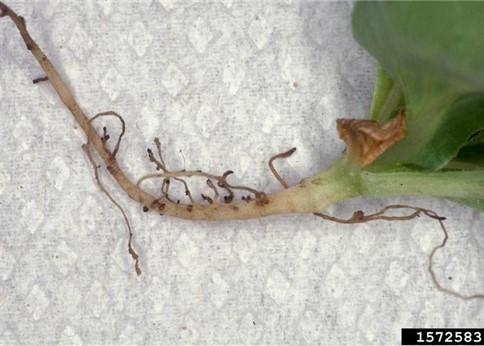High Tunnel Growers Should Consider Testing for Soluble Salt
If you had plants in high tunnel this season that were showing drought and salt stress in the form of poor growth, thin canopy, excessive leaf drop, poor fruit set, poor yields, necrotic leaf margins, especially on older leaves that can curl, then you might want to consider testing your soil for high soluble salts. These excess soluble salts often come from compost, manure, or fertilizers frequently applied without sufficient water (rain) to leach them through the soil.
High soluble salt levels in the soil can harm crops via drought stress in several ways. First, they can draw water away from plant roots resulting in wilted foliage and damaged roots (fig. 1). The plant roots can also absorb the excess soluble salts in the soil but cannot metabolize them. The soluble salts enter the roots and are moved through the water-conducting tubes to the leaves, where the water evapotranspires, gradually concentrating the salts to toxic levels.
Some vegetable crops are much more sensitive to soluble salts than others. Crops such as green beans, onions, and peas are the most sensitive, while cabbage, cucumbers, peppers, and potatoes are a bit salt tolerant. Broccoli, squash, and tomato are moderately salt tolerant.
Some possible remedies for high salts include having adequate drainage to help move salts out of the root zone and flushing the soil with as much water as possible for several days. When doing this, slowly apply the water, so it seeps into the soil and does not runoff. After the season, it may be best to take the plastic off the high tunnel and allow rain and snow to move the salts out of the growing zone, but you need to know if you have high soluble salt levels first, so it’s best to do that soil test.
This article appears in October 2022, Volume 13, Issue 7 of the Vegetable and Fruit News.
